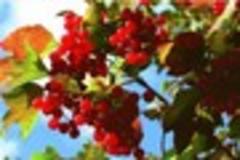 This is Bristol --
This is Bristol --Even though the leaves have fallen, the flowers have faded and the colours are muted, midwinter in your garden may not necessarily be bleak. Seed heads stand proud, birds and mammals are still visiting and there is a plethora of interesting plants to gladden the heart.
A range of evergreens come into their own at this time of year, such as holly, juniper, skimmia and pittosporum. Winter flowering plants with delicious scent include witch hazel, winter honeysuckle, viburnums and Christmas box.
There are plenty of berries for the birds and other wildlife, such as snowberry, checkerberry, prickly heath, pyrancantha and guelder rose. And the colours and patterns of trunks and stems are enhanced by the low winter sunlight; the bright white of the silver birch, lime green, bright orange and vibrant red of dogwood, the crazy curls of the corkscrew hazel and the coppery peeling bark of the paperbark maple.
Winter is the time to plant bare-root trees and shrubs, as they are now dormant and will remain so until early spring.
Remove plants from their wrappings, gently tease out roots, and plant in a hole the same depth as the roots, but about three times their diameter; this will ensure they have plenty of space to develop. Back fill with soil, eliminating any air pockets, and gently firm the surface. Give the plant a good watering and a few words of encouragement, and you can look forward to healthy growth in years to come.
Hedges can be planted now, too, and there are many to choose from. Specialist nurseries sell these in ready-assembled mixes, such as native hedging (dog rose, spindle, and crab apple), bird-friendly hedging (hawthorn, viburnum and sweet briar) and fruiting hedging (sloe, blackberry and cherry plum). Again these can all be purchased as bare-root plants, so you can grow a beautiful hedge for a minimum outlay.
Winter is the time to carry out maintenance tasks: clean and oil tools, empty power tools of petrol, and give mowers their winter MOT. And don't forget that maintenance is needed for plants too, so prune fruit trees, ensuring tools are sharp and clean to minimise the risk of disease entering ragged cuts.
Bring tender potted plants under cover, or wrap well in bubble-wrap, and raise them off the ground to aid drainage. Tender wall fruit can be protected with sheets of fleece, as can other large plants growing in borders.
You can pot up lily bulbs, alliums and agapanthus now, provided you have somewhere, such as an unheated greenhouse, to store them over the winter. The advantage of sowing annual flower seeds now, such as sweet peas, is that they will flower much earlier next year. Other annuals to sow now are love-in-the-mist, opium poppy and cornflower.
Remember that birds will find it difficult to source food in really cold weather, so buy plenty of bird feeders and food to see them through the winter. Bear in mind that foods with a high fat content, such as bacon rind, cooked rice and pasta will benefit birds in cold weather.
If the weather is inclement, there are some garden-related tasks you can carry out beside a cosy fire in your armchair.
Search seed and plant catalogues and make a wish-list. Are there any unusual varieties you would like to try? You could get together with friends and neighbours and order in quantity since, if you buy in bulk, you will get a cheaper deal.
Builders and construction teams are often less busy in winter, so it is well worth contacting them to build new patios, walls and pathways.
If the winter weather allows, take the opportunity to get out and about to visit other people's gardens for inspiration.
Here are a few to try: Westonbirt, Stourhead and Prior Park in Bath for a spectacular show of trees; Dunster Castle, Hestercombe and Tyntesfield for winter walks with your dog; and Hidcote Manor, Knightshayes and Lacock Abbey for all-round wintry magic.
To contact Sue, call 0117 944 2432, or email sue_oakey@hotmail.co.uk. Reported by This is 4 hours ago.